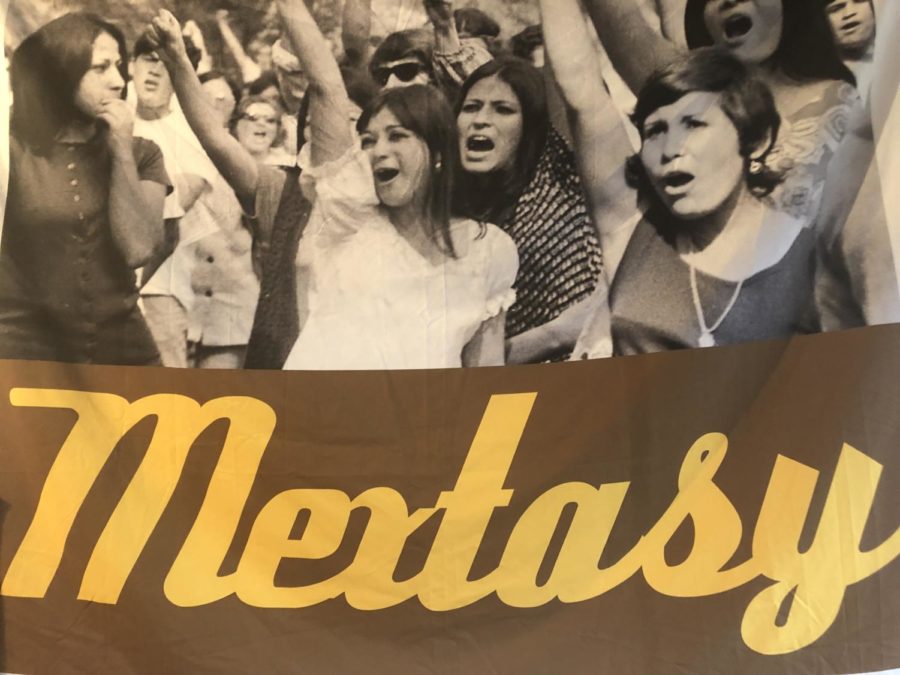Mextasy art exhibit mixes satire and Mexican culture
Logan Metzger/ Iowa State Daily
Mextasy, an art exhibit by William “Memo” Nericcio, is displayed in the Multicultural Center in the Memorial Union from Sept. 10 to Oct. 30.
September 18, 2019
Iowa State’s Multicultural Center is currently displaying an art exhibit called Mextasy, which is not only a reflection and expansion on William “Memo” Nericcio and Guillermo Nericcio García’s award-winning book “Tex[t]-Mex: Seductive Hallucinations of the Mexican in America,” but also William Nericcio’s own personal artwork and art that he has collected from known and unknown artists.
Nericcio is a Chicano literary theorist, American literature scholar and professor of English and comparative literature at San Diego State University. He can also be described as an artist.
Nericcio explained how his exhibit is split up into three different elements.
The first element involves a personal notion that Nericcio describes himself as a collector — although his wife would call him a hoarder — of things someone would typically throw away. He started collecting insulting jokes and advertisements that featured Mexicans and their culture as far back as his undergraduate years.
The first element of his exhibit shows these fragments and pieces of research that he collected over the years that ultimately led to him to publish his book, which came out in 2007. In his book he gives a backstory, questioning where the notion of portraying Mexicans as thieves came from.
Nericcio goes over how at the turn of the century, where many portrayals came from, picture postcards and news reels were being invented and these new forms of media highlighted the previous animosity.
These fragments helped Nericcio make his point of the history of stereotype development in the Latinx community in America, and where these stereotypes came from. These pieces crystalized the international conflict, and showed origins of stereotypes.
“It’s the first Instagrammed war, that war happens to be taking place on Mexican soil, and Mexicans happens to be the enemy,” Nericcio said.
The second element of Nericcio’s exhibit is his own personal art. While he said he doesn’t take credit for being an artist, Nericcio enjoys his own “ridiculous” graphic artwork.
He takes his vision of collages that he’s created and makes them even bigger on tapestry or larger paper where he displays his graphic jokes that have satirical aspects to them.
In these satirical jokes, he is not only facing stereotypes, but also political figures like President Trump.
Nericcio said he uses humor to mask the hate that has a new license in American society today due to the political figures that have given people a pass to do so.
The third element of the exhibit is Nericcio’s collection of other people’s art, where he can showcase his friends’ artwork that he admires. He gives up-and-coming artists the chance to showcase their work in this traveling exhibit that he has.
These artists range from his friends to even his undergraduate student, who showcases the same qualities and emotions that his other elements hold in his exhibition.
“It’s a mishmash. […] What you witness when you see Mextasy is like a large walk through of my office, which is where most of this started,” Nericcio said. “I started my collection by putting stuff on my office wall.”
Nericcio said he wants people to laugh, but while everything happening to those of ethnic backgrounds is not funny, laughter and humor is the best way to get people to start talking about these issues in America right now.
He said his artwork is large, colorful, tacky, there is way too much of it and it’s messy. The use of newspapers in relation to his pieces also tells a story of the relations between the media and stereotypes, and how they walk hand in hand.
“The best you can do is inoculate yourself [when referencing the exhibit],” Nericcio said. “And that’s what my show is an attempt to do. It is an inoculation against hate, with some bad jokes and some humor.”
Throughout the exhibit of different types of artwork that has either been collected or made by Nericcio, an observer can see an array of diversity upon each piece.
In the piece titled, “The Four Horsemen of the (Neo-Fascist) Apocalypse” there is a collage of Republican political figures that have made it known that they are against the Latinx community. This piece shows a direct correlation between this idea of stereotypes and politics.
In Raul Ruiz’ photo titled, “Homage to the Fresno Chicano Moratorium, 1971” there is a visually powerful group of women protestors of the Latinx community, showing also a female empowerment aspect to this exhibit.
In “The Typed Subject,” observers can see a newspaper clipping of a racist remark, which directly correlates to the theme of the exhibit.
In Mike Alfaro’s piece “Millennial Loteria,” observers can see a Loteria thrown into the 21st century. In this piece, Alfaro goes against stereotypes people have about Hispanic immigrants, while involving self-deprecating humor as well.
















